#splitgill
Text
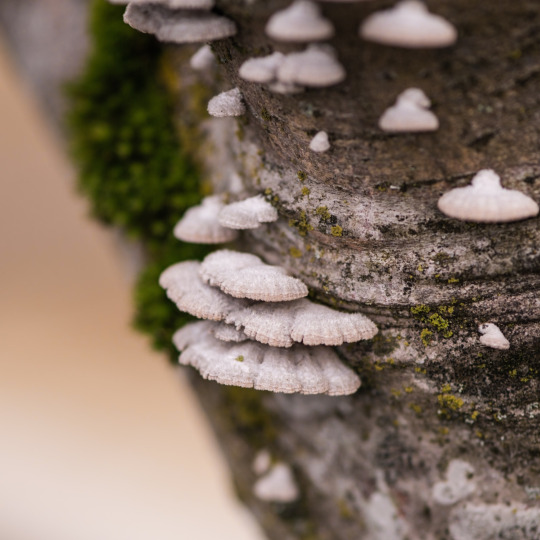

Splitgill Mushrooms
#artists on tumblr#original photographers#original photography#nature#nikon#orofeaiel#mycology#mushrooms#splitgill#mycophile#goblincore#fungus among us#seen on my walk#nature finds
29 notes
·
View notes
Text
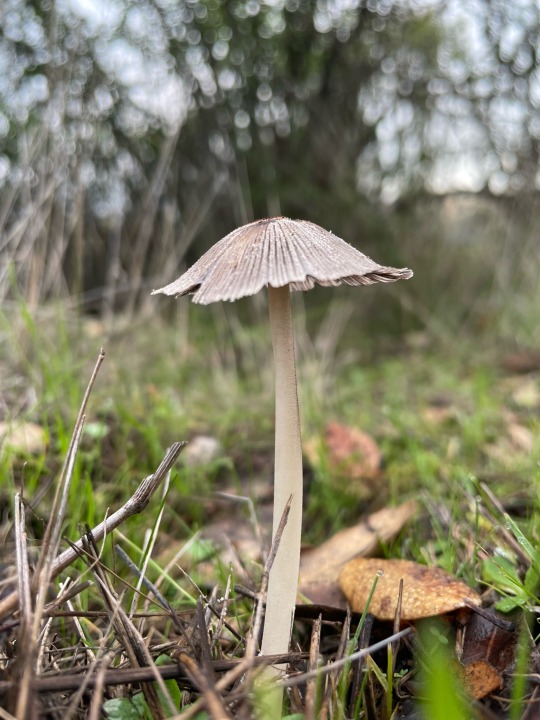

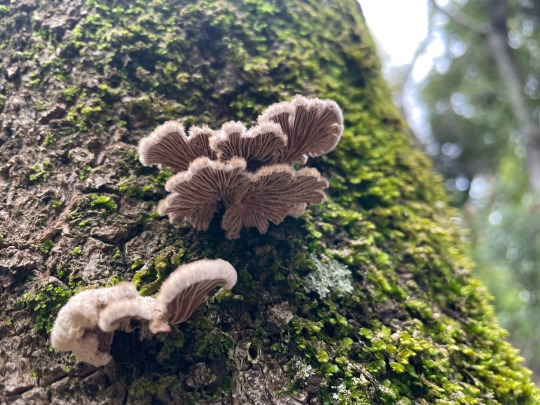


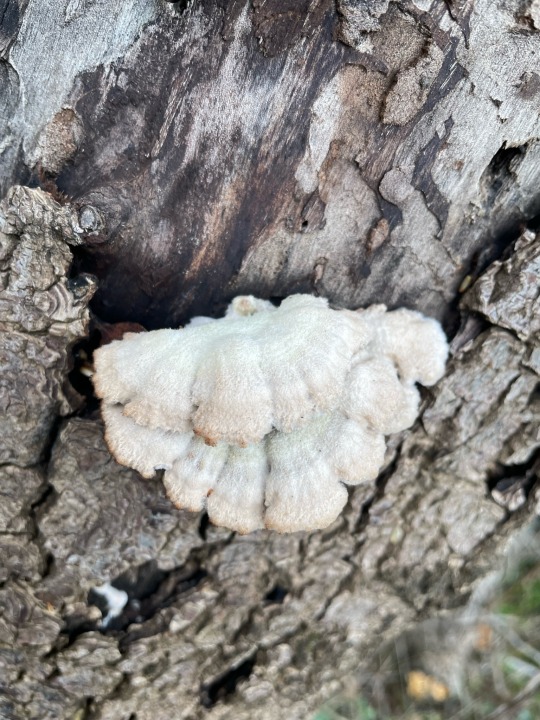
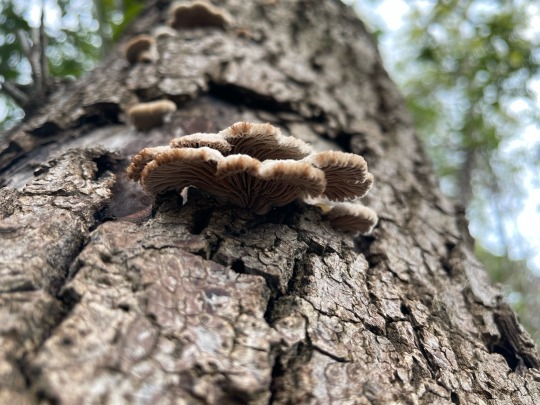


Today I bring you some hare’s foot inkcap, puffballs, and lots of splitgill
#mushrooms#mushroom#fungi#hare’s foot inkcap#ink cap mushroom#puffball#splitgill#take a walk with me
23 notes
·
View notes
Text

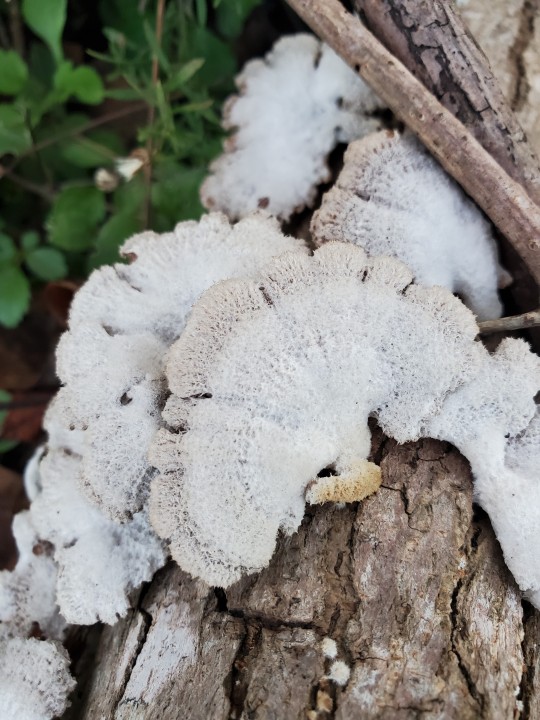

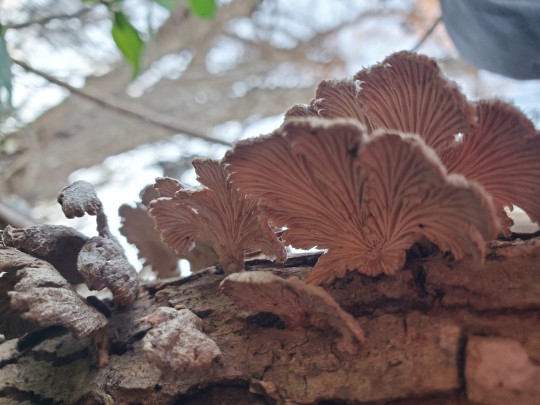
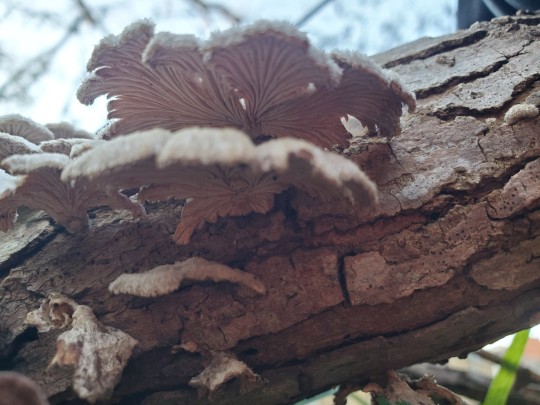

Split gill fungus! 》 Schizophyllum commune
Look what I found in the dog park at my complex!
I'd seen them before from a distance but didn't observe them very closely. Yesterday I chose to give them a look and wow! They're so beautiful! I've never seen anything quite like them. And what a pleasent surprise when I looked underneath! Their hymenium is gorgeous with a very unique gill formation.
"Some fungi have tens of thousands of mating types, approximately equivalent to our sexes (the record holder is the split gill fungus, Schizophyllum commune, which has more than twenty-three thousand mating types, each of which is sexually compatible with nearly every one of the others)." - Entangled Life by Merlin Sheldrake (pg. 36)
"In order for two hypae to mate, the gene sequence at each of these loci must be different. Most species have at least two possible sequence options, or alleles, for each locus. . . The Split Gill Fungus has more than 300 alleles at the A locus and more than 90 at the B locus, a diversity that provides for 23,328 different combinations of A and B alleles, or over 23,000 different mating types! Each of these spores is compatible with over 98% of other Split Gill primary mycelia in the world, a breeding capacity that underlies the global distribution of this common mushroom." - Radical Mycology by Peter McCoy (pg. 13)
Southeast Texas, 6 Jan. 2024
#amatuer mycology#mushroom hunting#mushrooms#mycology#fungi#mushrooms of texas#texas mushrooms#wild fungi#fungi of texas#fungarium#wild mushrooms#mushroom#amatuer mycologist#foraging#split gill fungus#split gill mushroom#splitgill#fungus#rot#species identification#mushroom species#special interest#entangled life#radical mycology
12 notes
·
View notes
Text


2 notes
·
View notes
Text

Splitgill mushroom, Schizophyllum commune, is a very interesting little mushroom. They're found all over the world and, despite their tough texture, are sometimes eaten in tropical areas, especially in parts of Mexico. Despite their pretty appearance and edibility, they're also one of the more dangerous mushrooms in an unexpected way: They can infect human bodies, especially the lungs. Although there are fungal spores everywhere and breathing some is unavoidable, it's best not to bring these too close to your face (unless well cooked) to avoid breathing their spores as much as possible. I'd personally avoid collecting them, just to be careful!
64 notes
·
View notes
Photo

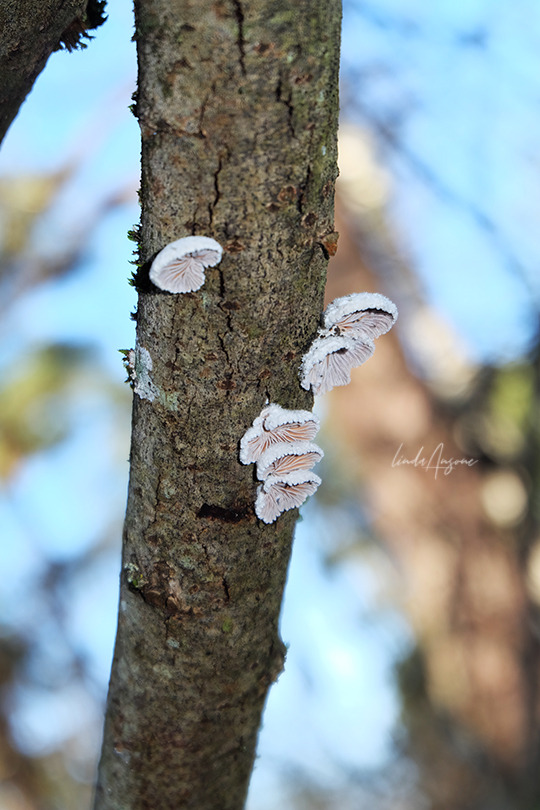


Schizophyllum commune
#mushrooms#fungi#mycology#mushroom photography#schizophyllum commune#split gill fungus#splitgill mushroom#nature#nature photography#original photography#photographers on tumblr
276 notes
·
View notes
Text

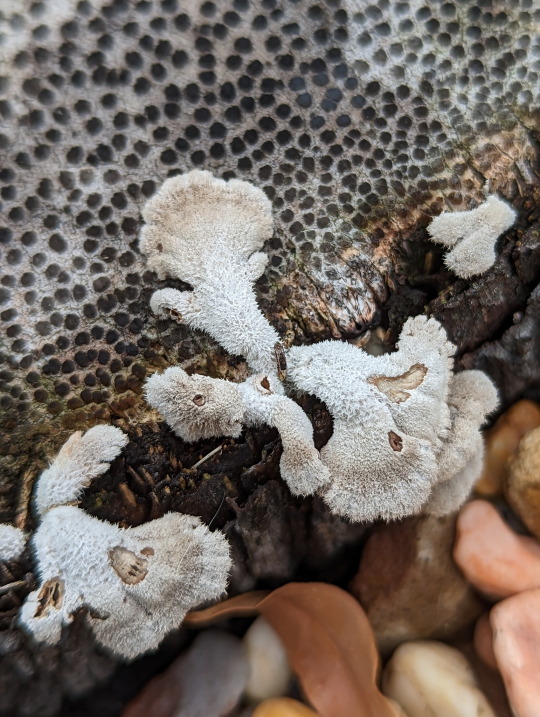

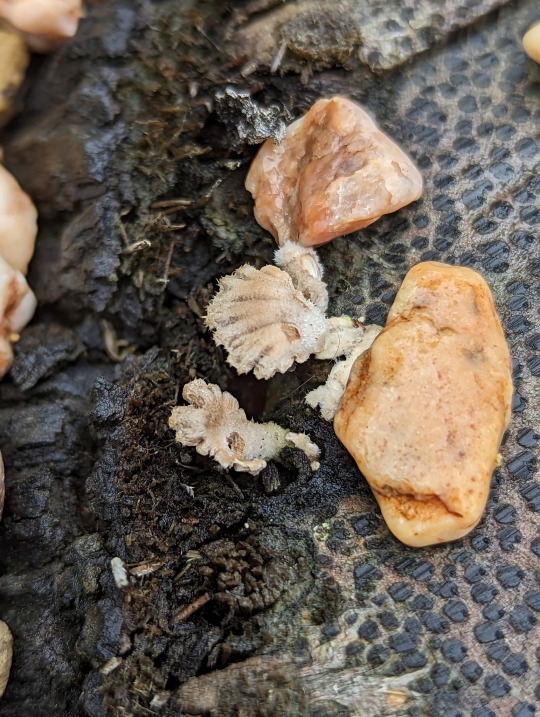

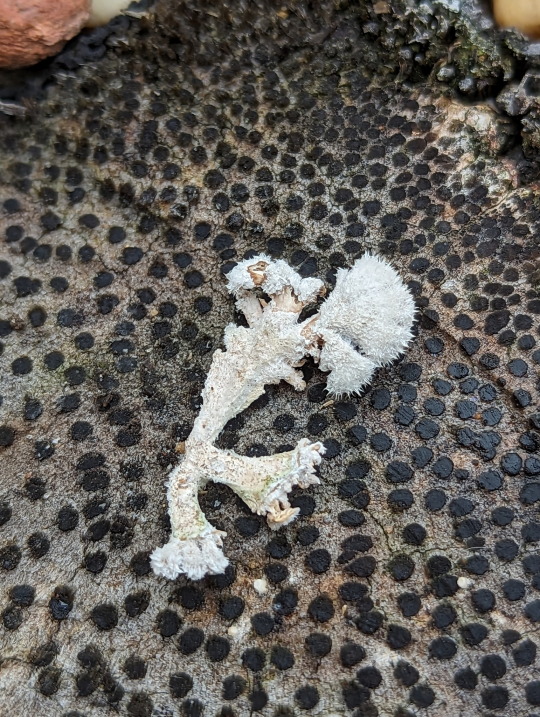
Splitgill Mushroom Growing on Tree Stump
Schizophyllum commune
22/03/23 - NSW, Dapto
#Schizophyllum commune#Splitgill Mushroom#Agaricales#Agaricomycotina#Higher Basidiomycetes#Basidiomycota#Basidiomycete Fungi#fungi#fungus#mycology
55 notes
·
View notes
Photo

Oops #Splitgill was supposed to be yesterday but I swapped with Chanterelle! Well here she is, she knows she's worth the wait.
139 notes
·
View notes
Text

#funguary#art#artists on tumblr#illustration#cottagecore#gouache#cryptidcore#mosscore#gremlincore#weirdcore#painting#mushroom art#mushroom#mushroomcore#mushroom people#splitgil mushroom
149 notes
·
View notes
Photo
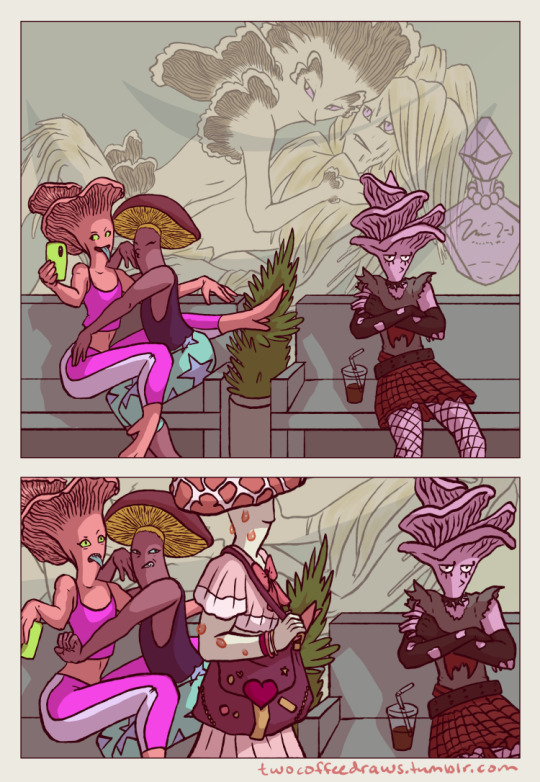

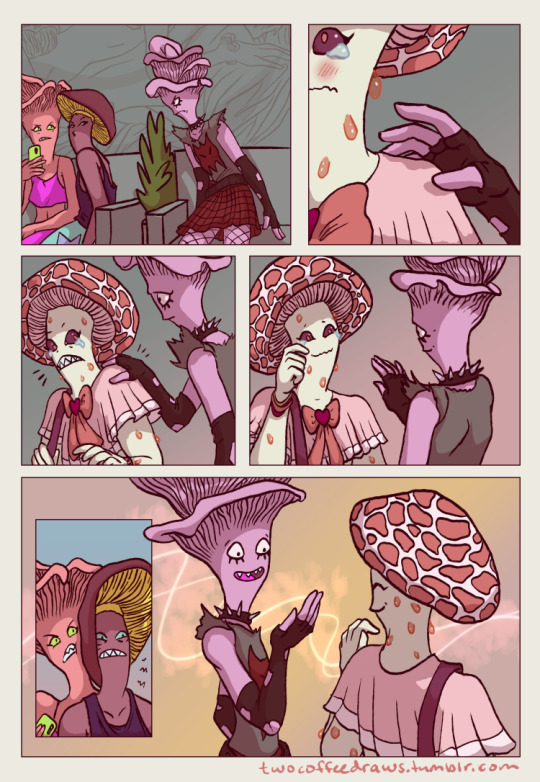
Finished Funguary 2022, just in time for next year’s, haha. Had what I thought was the brilliant idea of jamming the remaining mushrooms into a short comic, and then sat on the rough sketches for months. Learned a lot about the comic making process, future attempts will be faster!
#artists on tumblr#funguary 2022#mushroomonth#clip studio#comics#oyster mushroom#plums and custard fungus#splitgill mushroom#lion's mane#podoserpula miranda#wrinkled peach mushroom#OC nonsense#my art#super happy with how the colors turned out
12 notes
·
View notes
Text

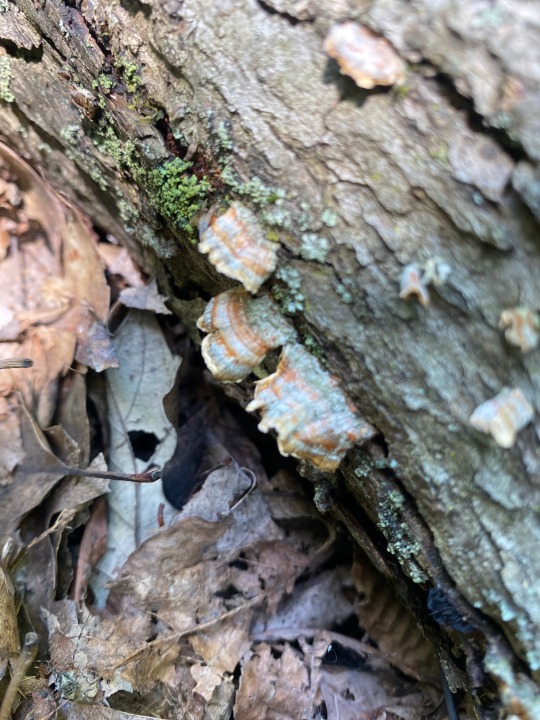
pale brittle stem & what i’m pretty sure are ochre bracket !!! love rain love good fungi days
4 notes
·
View notes
Text
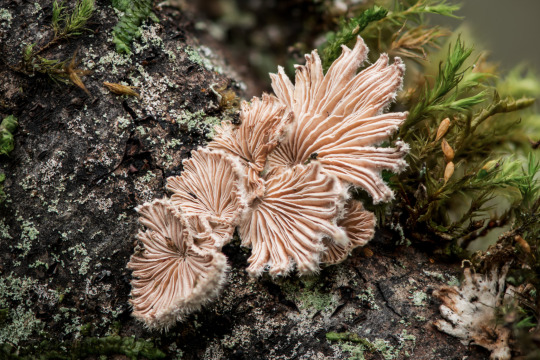
Splitgill Mushrooms
#artists on tumblr#original photographers#original photography#hiking#pacific northwest#nature#nikon#washington#orofeaiel#pnw#splitgill mushrooms#mycology#mycophile#goblincore#forest finds#bremerton
76 notes
·
View notes
Text
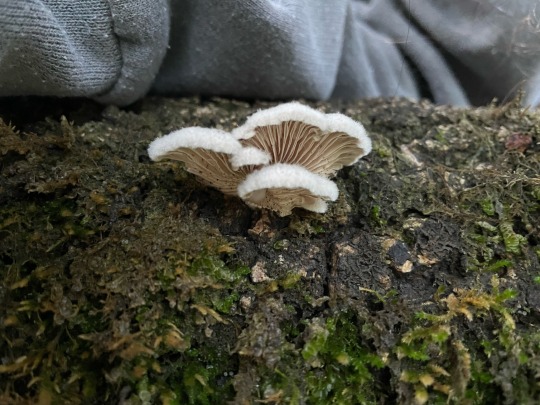

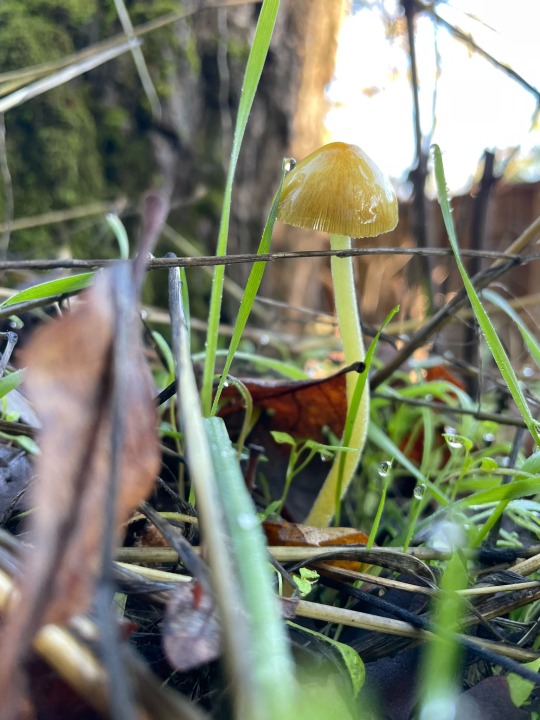
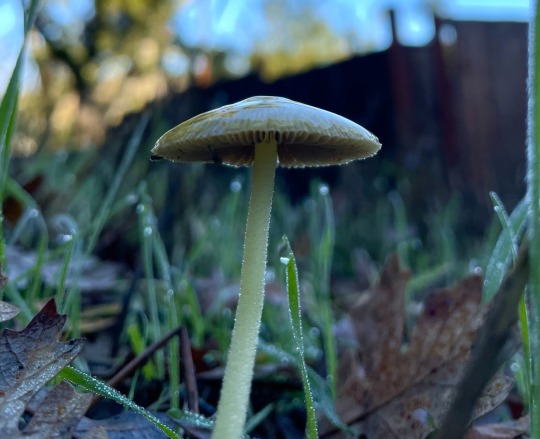

Todays mushrooms! Always trying to get better at this, we got some splitgill, some yellow fieldcap, and possibly something in the laccaria genus?
#I also found a bolete today haha but the pictures didn’t go as well with this whole set#mushrooms#mushroom#fungi#splitgill#yellow fieldcap#take a walk with me
19 notes
·
View notes
Text



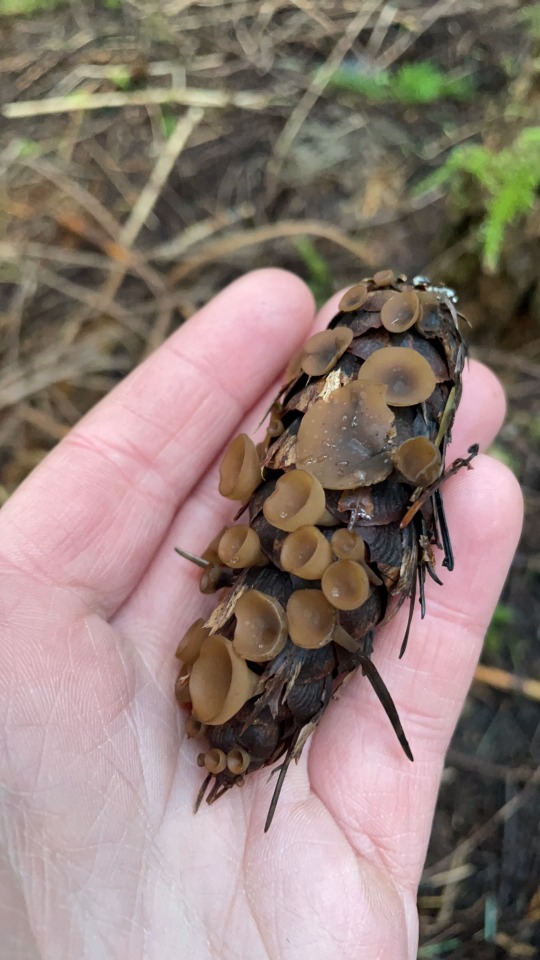

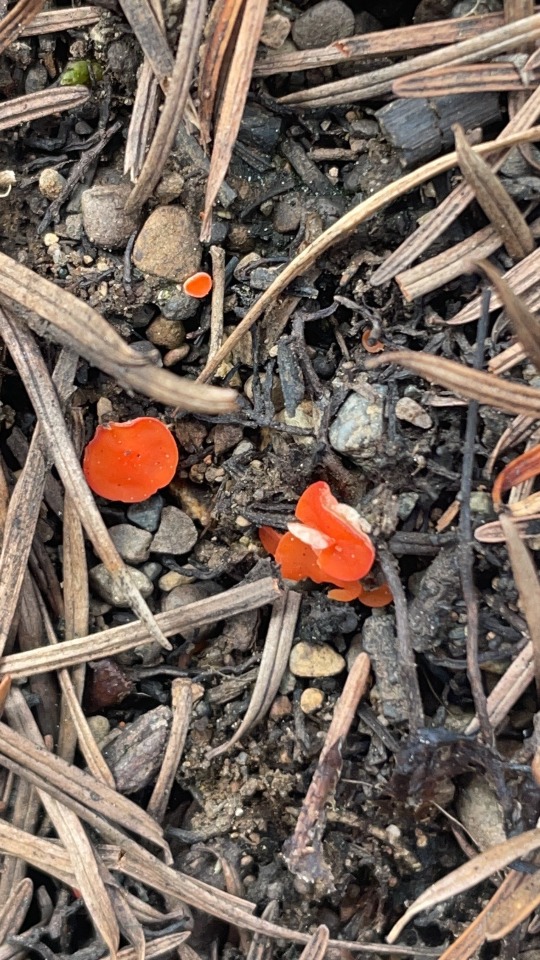
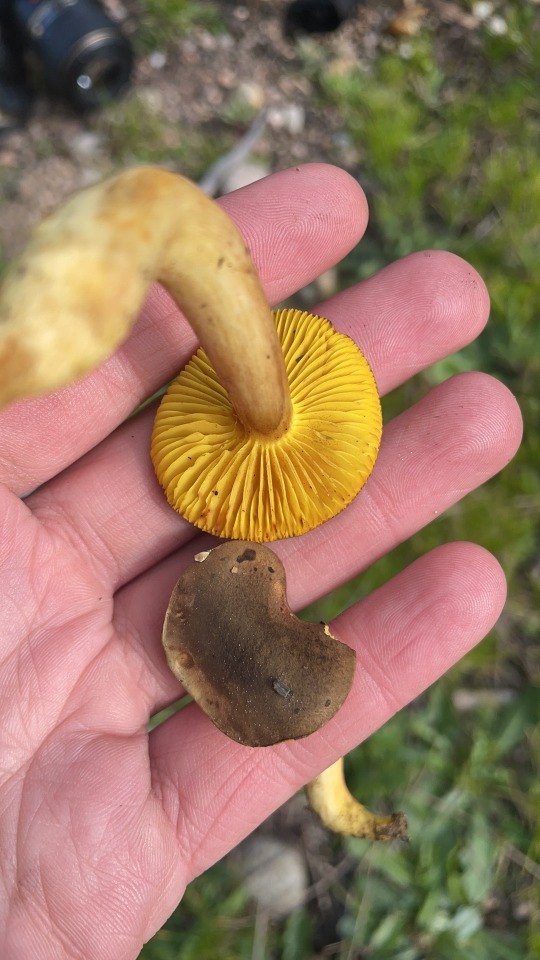

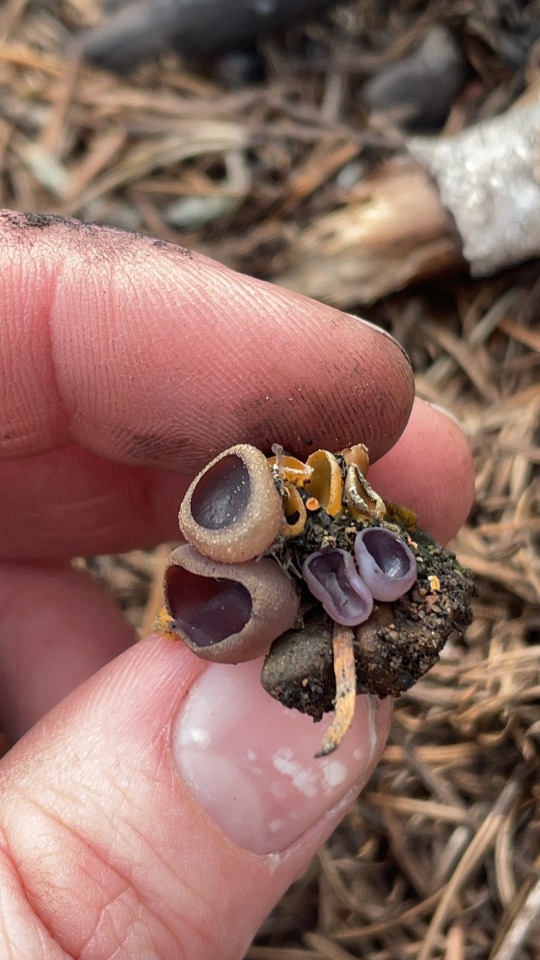
New mushrooms today!
Left to right: splitgill mushrooms (I’m sure I’ve seen these before but passed the up because they look boring from above), wrinkled club fungus, dead man’s fingers, chocolate cone cup, fir disco, pulvinula sp, gilled boletes (they normally have sponge underneath), violet fairy cup x2
155 notes
·
View notes
Text
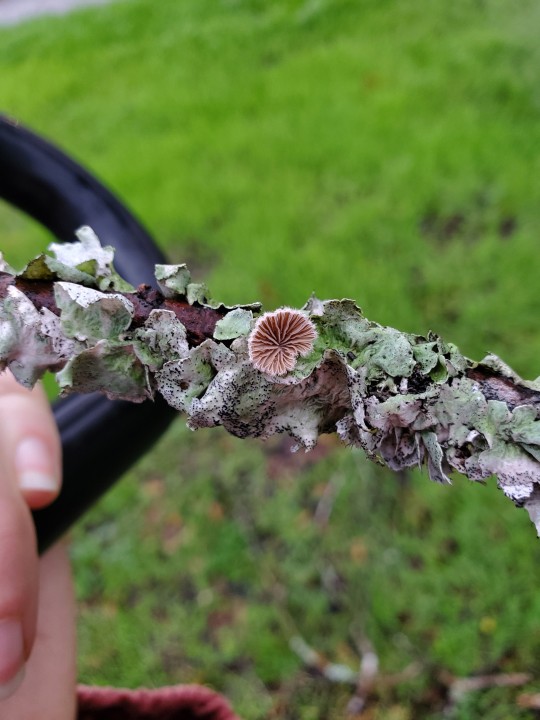







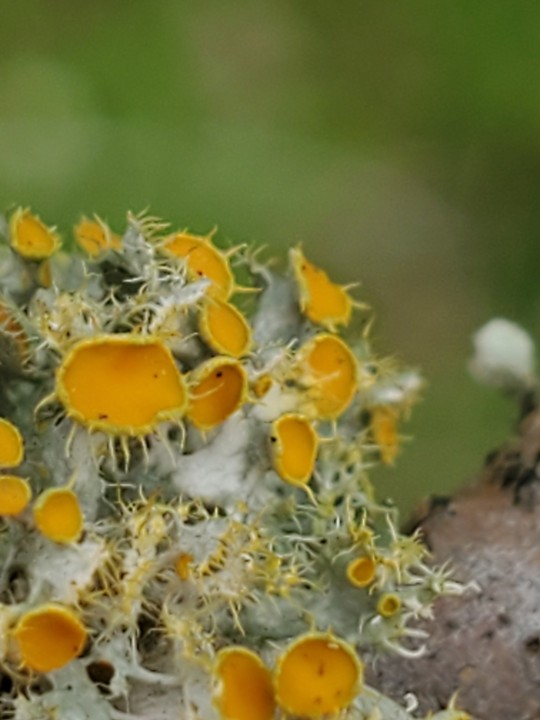
Splitgill fungus 》 Schizophyllum commune
Golden-eye lichen 》 Teloschistes chrysophthalmus
The dreaded move from hell is finally over and we've been settling in well at the new place. Its been a pleasure to explore the new park thats nearest to me now, and here are a couple of my discoveries! Some cute lil splitgills and a darling golden-eye. I will never not stop to appreciate these alien looking little guys, they're so strange and beautiful. 💛
Southeast Texas, 11 Feb. 2024 (splitgill), 15 Feb. 2024 (golden-eye)
#amatuer mycology#mushroom hunting#mushrooms#mycology#fungi#mushrooms of texas#texas mushrooms#wild fungi#fungi of texas#fungarium#lichen identification#lichenology#lichen#lichens of texas#wild mushrooms#mushroom#mushroom identification#foraging#split gill mushroom#split gill fungus#splitgill#goldeneye lichen#lichen species#mushroom species#species identification#special interest
17 notes
·
View notes
Text
How to Identify Turkey Tail Mushrooms
Click here to learn more about the How to Identify article series.
Name: Turkey Tail Mushroom (Trametes versicolor, syn. Coriolus versicolor and Polyporus versicolor)
Range and typical habitat(s): Commonly found throughout North America, but found in varying amounts on all continents except Antarctica

Distinguishing physical characteristics (size, colors, overall shapes, detail shapes): Turkey tail is one of a number of small, shelf-shaped mushrooms that grow on decaying wood. Most specimens are only a couple of inches across, though remarkable examples may reach eight inches across. The cap lacks a stipe (stem), and is often semicircular in shape with a ruffled edge. Like a turkey’s tail, it has several concentric bands of color, usually various shades of brown, and the center being darkest, though individual coloration may vary. Some bands may acquire a greenish tint if algae grows on them. The outermost band, which is actively growing, is white. Close examination may reveal very fine hairs on some parts of the cap. The hymenophore on the underside has very tiny pores and is usually white to pale brown.
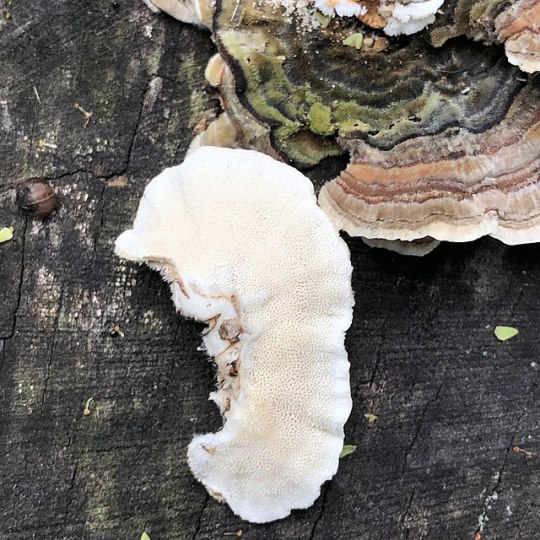
The pored white underside of the turkey tail mushroom.
Turkey tail usually grows in big, layered clusters; some particularly large flushes may have hundreds of individual mushrooms. It only grows on the dead wood of deciduous trees. As it decays the lignin (and, to a lesser degree, cellulose) in the wood, it is included among the white-rot fungi. While many mushrooms only last a few days to a couple of weeks, turkey tails may persist for months.

Other organisms it could be confused with and how to tell the difference: There are several shelf-like mushrooms that are quite similar to turkey tail. Let’s look at a few of the more common ones.
False turkey tail (Stereum ostrea) at first glance looks very similar, with its varied rings of brown and pale outer edge. However, a look at the underside reveals a smooth surface rather than the pores of true turkey tail. It also tends to be more reddish in tone and lighter overall, lacking the dark center often seen in turkey tail.

Note the smooth surface on the pale underside of the false turkey tail mushroom. By JSmall, CCA-4.0
The gilled polypore (Trametes betulina, formerly Lenzites betulina) looks rather like an old, pale, washed-out turkey tail. As its common name suggests, though, it has gills instead of pores underneath the cap.

Note the gills on the underside rather than the turkey tail’s pores. By Wilhelm Zimmerling PAR, CCA-SA-4.0
There are other Trametes species that do have pores like turkey tail does; ochre bracket (Trametes ochracea) is one example. In this case, careful examination of the coloration of prime specimens will reveal paler colors on average.
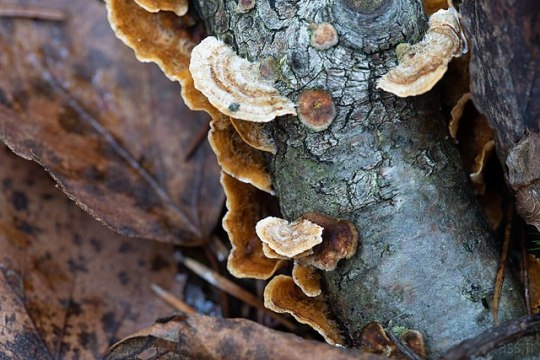
Note how much paler these T. ochracea are.
Splitgill mushrooms (Schizophylum commune) may superficially look like turkey tails at first glance, but upon examination the more uniformly pale upper cap and deeply grooved gills underneath give it away as another species entirely.

White splitgill mushrooms showing their namesake.
Splitgill mushrooms (Schizophylum commune) may superficially look like turkey tails at first glance, but upon examination the more uniformly pale upper cap and deeply grooved gills underneath give it away as another species entirely.
Anything else worth mentioning? While turkey tail mushrooms are not generally considered to be edible, they may be an organic substitute for chewing gum. They also have purported medicinal value. Japan allows its compound, Polysaccharide-K, as a supplementary treatment for cancer; it is also taken as a dietary supplement elsewhere. Studies regarding PSK’s efficacy in treating cancer, immune deficiencies, or other ailments are contradictory at best. While long-term use does not seem to have any particularly toxic effects, it is not recommended for pregnant people, and taking turkey tail can cause darkened stool and fingernails, and diarrhea.
As with any supplement that has not received FDA approval, caution is advised, as is speaking with your physician prior to use. The fad associated with recent Western use often skirts the line of pseudoscience, and most of the websites I found about this species were people selling it while exaggerating potential effects regarding things like gut health and general immune responses. While turkey tail is a common mushroom, overharvesting in an area can reduce the availability of spores and potentially hinder the fungus’ reproduction there.
Further reading:
Mushroom Expert: Trametes versicolor
MDC Field Guide: Turkey Tail
Midwest Mycology: Trametes versicolor
Encyclopedia of Life: Turkey Tail
Did you enjoy this post? Consider taking one of my online foraging and natural history classes or hiring me for a guided nature tour, checking out my other articles, or picking up a paperback or ebook I’ve written! You can even buy me a coffee here!
#turkey tail#turkey tail mushrooms#mushroom identification#mushrooms#shrooms#mushroom hunting#mushroom foraging#foraging#nature#outdoors#fungus#fungi#herbalism#pseudoscience#caveat emptor#mycology
53 notes
·
View notes